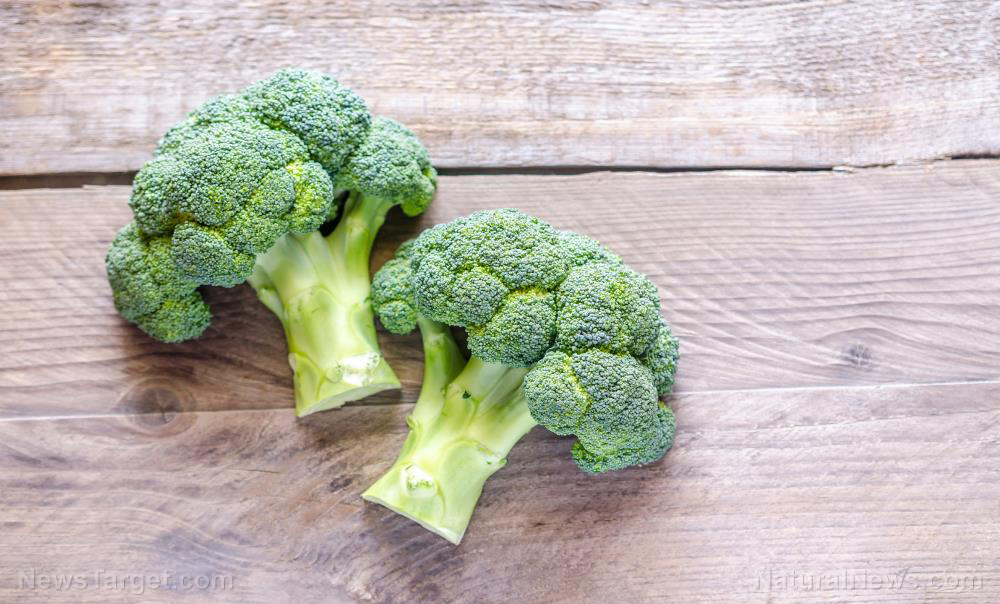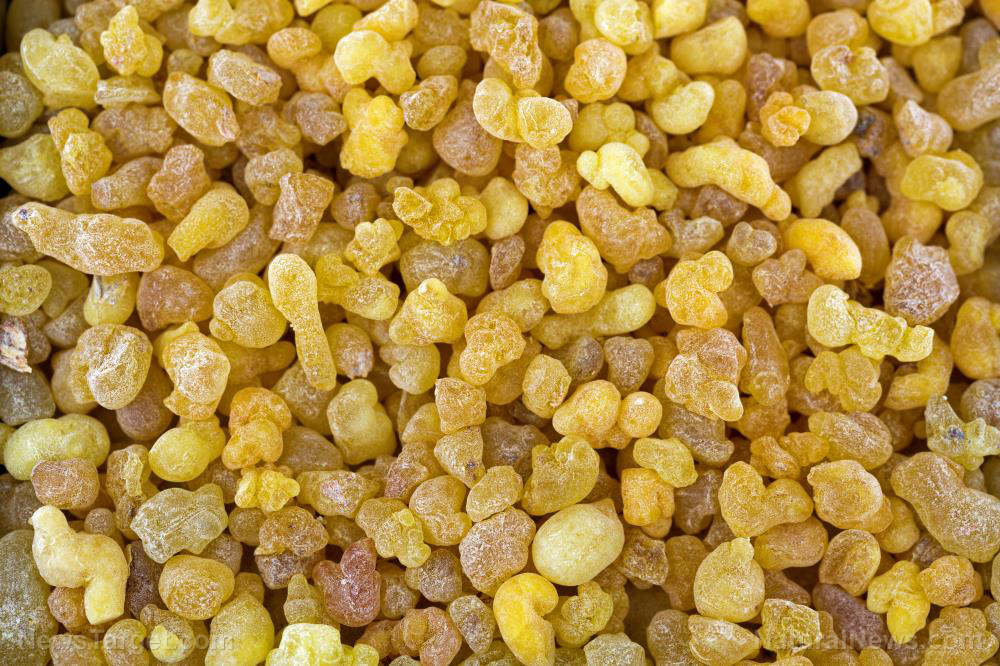Unrefined palm oil: An unfairly maligned nutrient powerhouse
05/31/2025 / By Laura Harris

- Unrefined red palm oil is packed with beneficial compounds like vitamin E (tocotrienols), beta-carotene and CoQ10, offering antioxidant, heart-healthy and neuroprotective benefits.
- Highly processed palm oil (refine or bleached) loses nutrients, while hydrogenated palm oil contains harmful trans fats. Opt for virgin or cold-pressed red palm oil for maximum benefits.
- Palm oil has a balanced ratio of saturated (50 percent) and unsaturated fats (40 percent monounsaturated), metabolized efficiently by the body, unlike artificial trans fats.
- Conventional palm oil farming can involve deforestation and pesticides. Choose organic, RSPO-certified or small-scale sources to minimize environmental and health risks.
- With a high smoke point, palm oil is ideal for frying, stews (e.g., Nigerian jollof), baked goods and traditional dishes across Africa and South America.
In today’s health-conscious world, consumers are increasingly wary of processed foods laden with artificial additives and unhealthy fats. Amid this scrutiny, natural palm oil – a traditional dietary staple for centuries – has been caught in a whirlwind of misinformation. Often criticized alongside synthetic trans fats, palm oil is, in fact, a nutrient-dense, versatile ingredient with significant health benefits.
Brief history of palm oil
Palm oil is derived from the fruit of the Elaeis guineensis tree, which is native to West Africa, where it has been consumed for over 5,000 years. It is a cornerstone of African diets and played a role in trade routes as early as the 15th century. The oil is extracted from the fruit’s fleshy mesocarp (red palm oil) or kernel (palm kernel oil), with the former being richer in nutrients.
Palm oil entered the global market during the Industrial Revolution and was prized for its stability and versatility. By the 20th century, it had become a key ingredient in processed foods, biofuels and cosmetics. However, its reputation suffered due to its association with deforestation and unhealthy processed foods — issues tied to industrial palm oil, which is different from the traditional, unrefined form.
Nutritional benefits
Unrefined red palm oil is a nutritional powerhouse, offering:
- Vitamin E (tocotrienols) – A potent antioxidant linked to reduced inflammation, heart health and neuroprotection. Palm oil contains more tocotrienols than any other vegetable oil.
- Beta-carotene – A compound that gives the oil its red hue and is converted inside the human body to vitamin A, an essential nutrient that supports healthy vision, immunity and skin health.
- Healthy fats – Unrefined palm oil has a balanced ratio of saturated (palmitic acid) and unsaturated fats (oleic acid). Unlike trans fats, the saturated fats in unrefined palm oil are metabolized efficiently by the body when consumed in moderation.
- Coenzyme Q10 (CoQ10) – A natural compound that supports cellular energy production and cardiovascular health.
Unlike the highly refined, bleached palm oil commonly used in processed foods, unrefined palm oil contains most, if not all, of the palm fruit’s original nutrient content, making it a healthier and more nutritious choice. (Related: Controversial ingredient sparks debate: Could palm oil give you cancer?.)
Trans fats (found in hydrogenated oils) are universally condemned for raising LDL cholesterol and increasing heart disease risk. Because unrefined palm oil does not contain trans fats, it is a safe and healthy addition to a balanced diet.
Research suggests that unrefined palm oil may:
- Improve blood lipid profiles by increasing HDL (“good” cholesterol)
- Provide antioxidants that protect against oxidative stress
- Support brain health due to its tocotrienol content
Choosing organic palm oil
While unrefined palm oil itself is non-toxic, conventional farming practices may introduce contaminants. For example, some plantations use herbicides like glyphosate, making organic or sustainably certified (RSPO) palm oil a better choice for reducing pesticide exposure. Although heavy metal contamination (such as lead, cadmium or mercury) is rare, it can occur due to soil pollution from mining or industrial activity. Reputable brands often test for these substances.
If you’re looking for high-quality palm oil, choose cold-pressed (unrefined) red palm oil sourced from small-scale farms. This product is minimally processed and retains maximum nutrition. While organic certification isn’t strictly necessary, choosing sustainably sourced palm oil can help mitigate environmental and health concerns linked to conventional farming.
Culinary uses and recipe ideas
Unrefined red palm oil’s high smoke point (450 F or 232 C) make it ideal for:
- Frying and sautéing – Used in West African dishes like Nigerian jollof rice or plantain fritters.
- Soups and stews – Adds richness to egusi soup or Brazilian moqueca.
- Baked goods – Provides moisture in vegan pastries when used as a butter substitute.
- Traditional medicine – In some cultures, red palm oil is consumed daily for vitality.
Here are some popular palm oil recipes:
- Nigerian banga soup (palm fruit stew with fish)
- Ghanaian red red (bean stew with fried plantains)
- Brazilian acarajé (black-eyed pea fritters)
- Palm oil curry (Southeast Asian-inspired coconut-palm oil fusion)
This story is not medical advice and is not intended to treat or cure any disease. Always consult with a qualified naturopathic physician for personalized advice about your specific health situation or concern.
Explore more about the health benefits of superfoods and other natural ingredients at NaturalNews.com, your trusted source for wellness insights and nutritional knowledge.
For cutting-edge tools to expand your understanding of natural health, try Brighteon.ai, an innovative AI model created by Mike Adams, the Health Ranger. This free, downloadable tool is designed to decentralize knowledge, bypass censorship, and empower individuals with actionable information.
If you’re passionate about nutrition, natural medicine, and uncensored discussions, visit Brighteon.com and a free speech video platform and join our vibrant communities on Brighteon.IO and Brighteon.social. Dive into open conversations about food, ingredients and holistic health today!
Watch this video to know the good, the bad and the oily part of palm oil.
This video is from the Daily Videos channel on Brighteon.com.
More related stories:
Indonesia bans edible oil exports (i.e., palm oil), sparking global “mayhem.”
Many native forest species threatened by booming palm oil industry.
BAD POLICY: Indonesia LIFTS BAN on palm oil exports as domestic cooking oil prices plunge.
Sources include:
Submit a correction >>
Tagged Under:
#nutrition, food science, functional food, grocery, health science, healthy fats, ingredients, natural health, nutrients, organics, palm oil, vegetable oil
This article may contain statements that reflect the opinion of the author





















